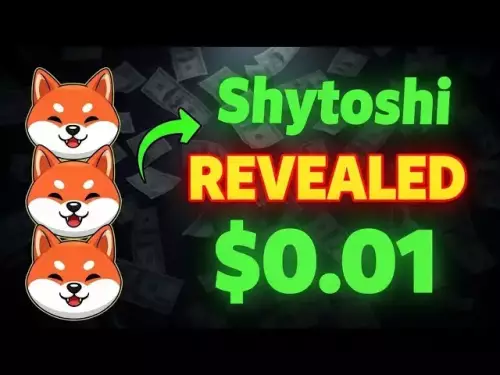-
 Bitcoin
Bitcoin $109300
-3.13% -
 Ethereum
Ethereum $4325
-5.34% -
 XRP
XRP $2.853
-5.03% -
 Tether USDt
Tether USDt $1.000
0.01% -
 BNB
BNB $858.7
-1.94% -
 Solana
Solana $209.6
-1.77% -
 USDC
USDC $0.9998
-0.02% -
 Dogecoin
Dogecoin $0.2152
-3.63% -
 TRON
TRON $0.3369
-2.86% -
 Cardano
Cardano $0.8291
-4.35% -
 Chainlink
Chainlink $23.38
-7.08% -
 Hyperliquid
Hyperliquid $44.83
-7.42% -
 Ethena USDe
Ethena USDe $1.001
-0.01% -
 Sui
Sui $3.323
-4.78% -
 Stellar
Stellar $0.3606
-6.12% -
 Bitcoin Cash
Bitcoin Cash $533.2
-3.75% -
 Avalanche
Avalanche $23.80
-3.23% -
 Cronos
Cronos $0.2944
-13.91% -
 Hedera
Hedera $0.2277
-4.49% -
 UNUS SED LEO
UNUS SED LEO $9.447
-1.13% -
 Litecoin
Litecoin $110.1
-2.96% -
 Toncoin
Toncoin $3.061
-3.75% -
 Shiba Inu
Shiba Inu $0.00001219
-3.24% -
 Polkadot
Polkadot $3.817
-3.50% -
 Uniswap
Uniswap $9.573
-3.87% -
 Dai
Dai $0.0000
0.00% -
 Bitget Token
Bitget Token $4.554
-0.97% -
 Monero
Monero $263.3
-2.75% -
 Aave
Aave $310.0
-1.98% -
 Ethena
Ethena $0.6484
-2.10%
What is a support and resistance level in trading?
Support and resistance levels are key in crypto trading, marking where price may reverse due to supply-demand imbalances and trader psychology.
Aug 29, 2025 at 07:00 pm
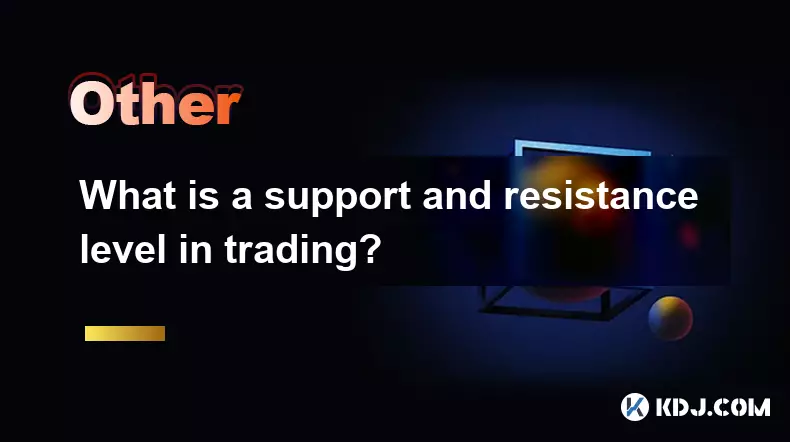
Understanding Support and Resistance in Market Dynamics
1. Support and resistance levels are foundational concepts in technical analysis, widely used by traders in the cryptocurrency markets. These levels represent price points where the forces of supply and demand meet, often leading to a pause or reversal in price movement. Support occurs when falling prices stop, reverse, and begin to rise, indicating increased buying interest. Resistance, on the other hand, forms when rising prices stall and reverse downward, signaling stronger selling pressure.
2. In the volatile environment of the crypto markets, support and resistance zones are not exact prices but rather areas where price action tends to react. These zones are established through repeated price interactions over time. When price approaches a known support level, traders may anticipate a bounce and initiate long positions. Conversely, near a resistance level, traders might expect rejection and consider short entries or profit-taking.
3. The psychological aspect of these levels plays a significant role. Round numbers, previous swing highs or lows, and areas where price has consolidated often become self-fulfilling prophecies as traders place orders around them. For instance, $30,000 on Bitcoin often acts as a psychological barrier due to its visibility and past significance.
4. Traders use various tools to identify these levels, including horizontal lines drawn on charts, moving averages, Fibonacci retracements, and volume profile. Candlestick patterns near these zones, such as pin bars or engulfing patterns, can provide additional confirmation of potential reversals.
5. Breakouts occur when price moves beyond a defined resistance or drops below a support level with strong momentum. A confirmed breakout, especially when accompanied by high volume, can signal a shift in market sentiment. However, false breakouts are common in the crypto space due to market manipulation and low liquidity on certain exchanges.
Role of Support and Resistance in Crypto Trading Strategies
1. Many algorithmic and discretionary trading systems incorporate support and resistance levels as key decision-making inputs. Range-bound strategies involve buying near support and selling near resistance, capitalizing on price oscillations within a defined channel. This approach works well in sideways markets common during consolidation phases in major cryptocurrencies.
2. Trend-following traders use broken resistance levels, which then become new support, to enter in the direction of the trend. For example, if Bitcoin breaks above a long-standing resistance at $40,000, that level may later act as support during pullbacks, offering a low-risk entry point for long positions.
3. Traders often combine these levels with momentum indicators like RSI or MACD to filter out weak signals and improve accuracy. A bullish divergence at a support zone can indicate a high-probability reversal, while an overbought RSI near resistance may warn of an impending drop.
4. In highly leveraged markets such as crypto futures, support and resistance zones are critical for setting stop-loss and take-profit orders. Placing stops just below support or above resistance helps avoid being stopped out by minor price wicks while still protecting capital.
5. Institutional traders and market makers frequently position their orders around these levels, contributing to increased liquidity and sharp price reactions. Observing order book depth on platforms like Bitfinex or Bybit can reveal clusters of buy or sell orders aligning with technical levels.
Psychological and Structural Aspects of Key Price Levels
1. Support and resistance are not only technical constructs but also reflect collective trader psychology. When a level holds multiple times, it gains credibility, and more participants begin to respect it. This creates a feedback loop where the level becomes stronger with each test.
2. Structural levels emerge from historical price action, such as all-time highs, major crash bottoms, or halving cycle peaks. These are often treated as long-term reference points by both retail and institutional investors in the crypto ecosystem.
3. Timeframes significantly influence the strength of a level — the longer the timeframe, the more significant the support or resistance. A monthly resistance level carries more weight than a 1-hour level, especially when aligned with macroeconomic cycles or network fundamentals.
4. Gaps in price, common in 24/7 crypto markets during low-liquidity periods, can also act as temporary support or resistance. Though gaps are less frequent than in traditional markets, they still appear during high-volatility events like ETF announcements or exchange outages.
5. On-chain metrics can complement technical levels. For example, a support zone coinciding with a high net-unrealized profit zone (based on UTXO age and cost basis) may indicate strong holder conviction, increasing the likelihood of a bounce.
Frequently Asked Questions
How do I identify a strong support or resistance level?Look for areas where price has reversed multiple times, especially when combined with high trading volume or significant candlestick patterns. The more times a level has been tested without breaking, the stronger it becomes.
Can support and resistance levels be dynamic?Yes. Moving averages, trendlines, and channels create dynamic levels that evolve with price. For instance, an ascending 50-day moving average can act as rising support in a bullish trend.
What happens when support turns into resistance?When a support level is decisively broken and price fails to reclaim it, the level often becomes resistance. This role reversal indicates a shift from buyer to seller dominance and is commonly seen after major breakdowns in altcoins.
Do support and resistance work on all cryptocurrencies?They are applicable across all digital assets, though effectiveness varies with liquidity and market maturity. Major coins like Bitcoin and Ethereum exhibit clearer levels due to higher participation, while low-cap altcoins may show erratic behavior due to manipulation.
Disclaimer:info@kdj.com
The information provided is not trading advice. kdj.com does not assume any responsibility for any investments made based on the information provided in this article. Cryptocurrencies are highly volatile and it is highly recommended that you invest with caution after thorough research!
If you believe that the content used on this website infringes your copyright, please contact us immediately (info@kdj.com) and we will delete it promptly.
- Pi Coin's Bullish Signs: Eyes on $0.365 Breakout and Beyond!
- 2025-08-29 21:50:12
- Bitcoin, Digital Health, Crypto Convergence: A New Era of Economic Resilience
- 2025-08-29 21:05:17
- BlockchainFX & Meme Coins: What's the Deal in 2025?
- 2025-08-29 19:05:12
- XRP Price Primed for Massive Rally? Raoul Pal Weighs In
- 2025-08-29 17:25:13
- Bitcoin's Future Value & Web Companies: A Perfect Storm?
- 2025-08-29 18:10:18
- Bitcoin Price Prediction: Institutional Wave Meets Reality Check, Says Research Firm
- 2025-08-29 15:30:16
Related knowledge
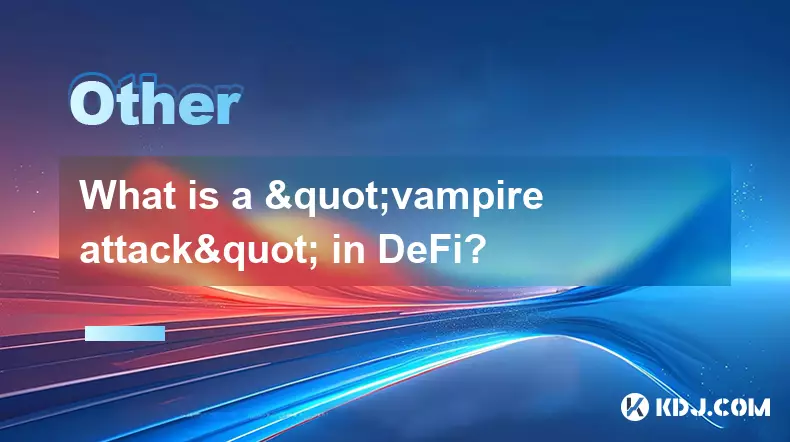
What is a "vampire attack" in DeFi?
Aug 29,2025 at 09:36pm
Understanding the Concept of Vampire Attacks in DeFi1. A vampire attack in the decentralized finance (DeFi) space refers to a strategic effort by one ...

What is a support and resistance level in trading?
Aug 29,2025 at 07:00pm
Understanding Support and Resistance in Market Dynamics1. Support and resistance levels are foundational concepts in technical analysis, widely used b...

What are "diamond hands" and "paper hands"?
Aug 29,2025 at 09:54pm
Diamond Hands: The Mindset of Holding Through Volatility1. Diamond hands refer to the psychological resilience of holding onto cryptocurrency assets d...
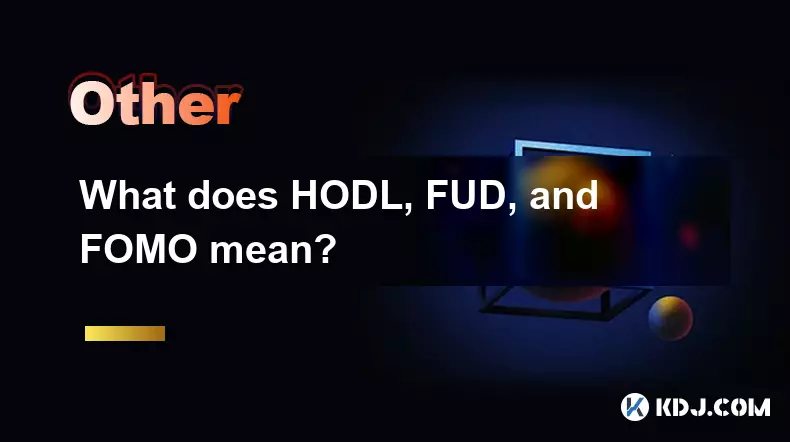
What does HODL, FUD, and FOMO mean?
Aug 29,2025 at 06:19pm
Fundamental Cryptocurrency Slang Every Trader Should KnowCryptocurrency communities thrive on unique terminology that reflects the culture, sentiment,...
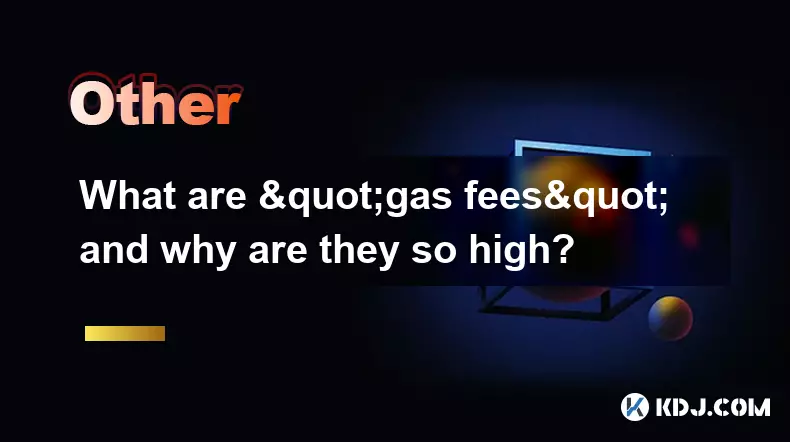
What are "gas fees" and why are they so high?
Aug 29,2025 at 08:54pm
Understanding Gas Fees in the Cryptocurrency Ecosystem1. Gas fees are payments made by users to compensate for the computational energy required to pr...
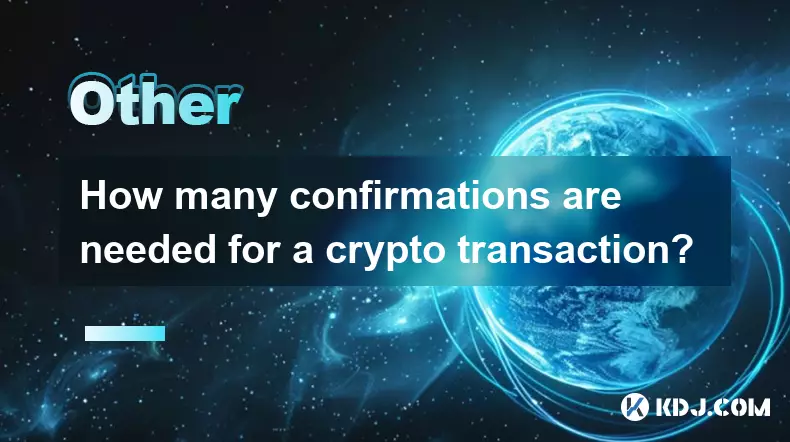
How many confirmations are needed for a crypto transaction?
Aug 29,2025 at 10:18pm
Understanding Blockchain Confirmations in Cryptocurrency Transactions1. When a cryptocurrency transaction is broadcast to the network, it enters a poo...

What is a "vampire attack" in DeFi?
Aug 29,2025 at 09:36pm
Understanding the Concept of Vampire Attacks in DeFi1. A vampire attack in the decentralized finance (DeFi) space refers to a strategic effort by one ...

What is a support and resistance level in trading?
Aug 29,2025 at 07:00pm
Understanding Support and Resistance in Market Dynamics1. Support and resistance levels are foundational concepts in technical analysis, widely used b...

What are "diamond hands" and "paper hands"?
Aug 29,2025 at 09:54pm
Diamond Hands: The Mindset of Holding Through Volatility1. Diamond hands refer to the psychological resilience of holding onto cryptocurrency assets d...

What does HODL, FUD, and FOMO mean?
Aug 29,2025 at 06:19pm
Fundamental Cryptocurrency Slang Every Trader Should KnowCryptocurrency communities thrive on unique terminology that reflects the culture, sentiment,...

What are "gas fees" and why are they so high?
Aug 29,2025 at 08:54pm
Understanding Gas Fees in the Cryptocurrency Ecosystem1. Gas fees are payments made by users to compensate for the computational energy required to pr...

How many confirmations are needed for a crypto transaction?
Aug 29,2025 at 10:18pm
Understanding Blockchain Confirmations in Cryptocurrency Transactions1. When a cryptocurrency transaction is broadcast to the network, it enters a poo...
See all articles
























